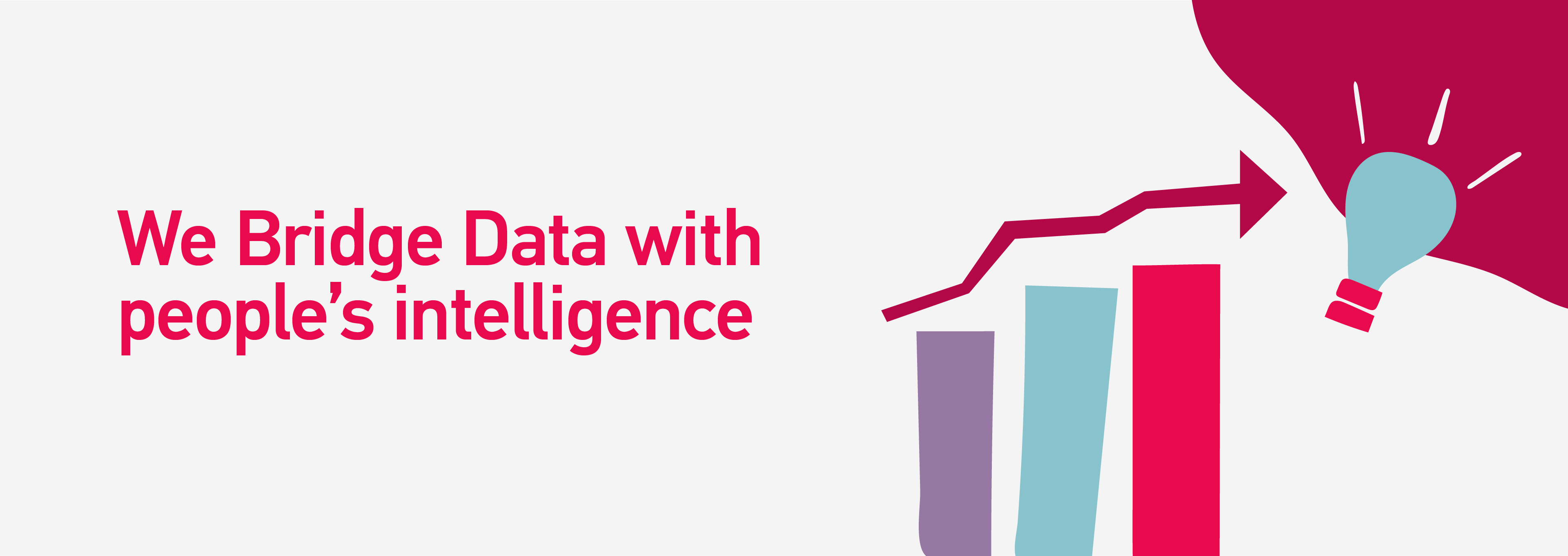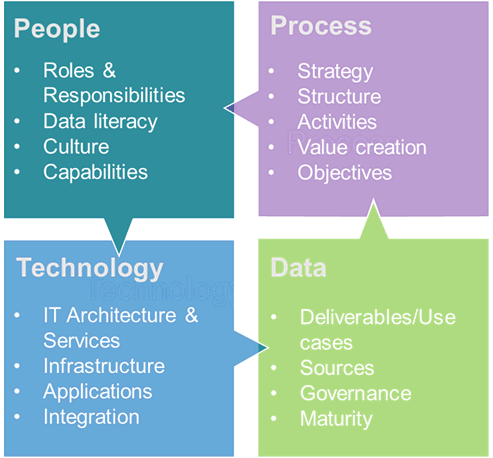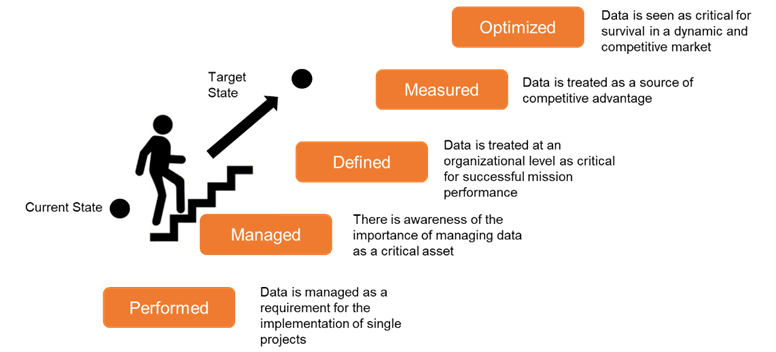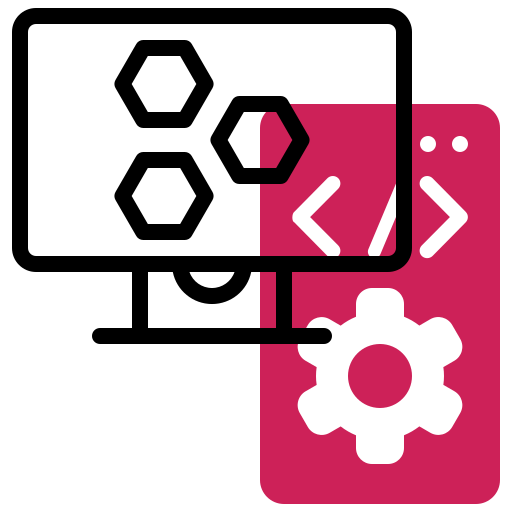We bridge data with people’s intelligence


Data Analytics Consulting
7 out of 10 digital transformation projects fail. There are numerous surveys on digital transformation which report on the main reasons for failure, a summary of which is presented below:
- Unspoken disagreement and miscommunication among top management
- Lack of capabilities to scale
- Short-sighted perception over analytics
- Lack of understanding of the critical success factors of a real transformation
- Fear of failure or change
 In WITSIDE, we see every project from a holistic standpoint, i.e. consisting of people, processes, technology and data. Our objective is not only to deliver but to accelerate adoption and provide measurable business value.
In WITSIDE, we see every project from a holistic standpoint, i.e. consisting of people, processes, technology and data. Our objective is not only to deliver but to accelerate adoption and provide measurable business value.
Transformation is more people and culture, rather than technology-driven. Our consulting practice is focused on that end in order to deliver solutions that accelerate adoption and business value for our clients.

Data Strategy and Governance
A data strategy includes business plans to use information for competitive advantage and support enterprise goals. Data strategy must come from an understanding of the data needs inherent in the business strategy and tries to answer the below questions:
- What data does the organization need?
- How will the organization acquire those data?
- How will the organization manage it and ensure its reliability over time?
- How will it utilize it?
Data strategy is tightly bonded with the projects/programs that will be executed to serve it. Projects/programs for maintaining and improving the quality of data, data integrity, access, and security while mitigating known and implied risks. The strategy must also address known challenges related to data management. In many organizations, the data management strategy is owned and maintained by the Chief Data Officer (CDO) or Chief Information Officer (CIO) and enacted through a data governance team, often supported by a Data Governance Council (DGC).
WITSIDE works together with its clients to articulate a cohesive data strategy including:
- A compelling vision for data management
- A summary business case for data management, with selected examples
- Guiding principles, values, and management perspectives
- The mission and long-term directional goals of data management
- Proposed measures of data management success
- Short-term (12-24 months) Data Management program objectives that are SMART (specific, measurable, actionable, realistic, time-bound)
- Descriptions of data management roles and organizations, along with a summary of their responsibilities and decision rights
- Descriptions of Data Management program components and initiatives
- A prioritized program of work with scope boundaries
- A draft implementation roadmap with projects and action items

Data Governance (DG) is defined as the exercise of authority and control (planning, monitoring, and enforcement) over the management of data assets. All organizations make decisions about data, regardless of whether they have a formal Data Governance function. While the driver of data management overall is to ensure an organization gets value out of its data, Data Governance focuses on how decisions are made about data and how people and processes are expected to behave in relation to data. The scope and focus of a particular data governance program will depend on organizational needs, but most programs include:
- Strategy: Defining, communicating, and driving execution of Data Strategy and Data Governance Strategy
- Policy: Setting and enforcing policies related to data and Metadata management, access, usage, security, and quality
- Standards and quality: Setting and enforcing Data Quality and Data Architecture standards
- Oversight: Providing hands-on observation, audit, and correction in key areas of quality, policy, and data management (often referred to as stewardship)
- Compliance: Ensuring the organization can meet data-related regulatory compliance
- Issue management: Identifying, defining, escalating, and resolving issues related to data security, data access, data quality, regulatory compliance, data ownership, policy, standards, terminology, or data governance procedures
- Data management projects: Sponsoring efforts to improve data management practices
- Data asset valuation: Setting standards and processes to consistently define the business value of data assets
To accomplish these goals, a Data Governance program will develop policies and procedures, cultivate data stewardship practices at multiple levels within the organization, and engage in organizational change management efforts that actively communicate to the organization the benefits of improved data governance and the behaviors necessary to successfully manage data as an asset. For most organizations, adopting formal DG requires the support of organizational change management, as well as sponsorship from C-level.
Organizations increasingly strive to become data-driven – proactively considering data requirements as part of strategy development, program planning, and technology implementation. At WITSIDE we believe that doing so, often entails significant cultural challenges. Moreover, because culture can derail any strategy, Data Governance efforts need to include a cultural change component – again, supported by strong leadership.
WITSIDE helps its clients seize the value of any digital transformation initiative by helping their people shift mindsets and culture, adopting the new technologies and processes.

Maturity Assessment
The primary goal of a data management maturity assessment (DMMA) is to evaluate the current state of critical data management activities in order to plan for improvement. The evaluation places the organization on the maturity scale by clarifying specific strengths and weaknesses. It helps the organization identify, prioritize, and implement improvement opportunities. In meeting its primary goal, a DMMA can have a positive impact on culture. It helps:
- Educate stakeholders about data management concepts, principles, and practices
- Clarify stakeholder roles and responsibilities in relation to organizational data
- Highlight the need to manage data as a critical asset
- Broaden recognition of data management activities across the organization
- Contribute to improving the collaboration necessary for effective data governance
Based on assessment results, an organization can enhance its Data Management program, so it supports the organization’s operational and strategic direction. Typically, Data Management programs develop in organizational silos. They rarely begin with an enterprise view of the data. A DMMA can equip the organization to develop a cohesive vision that supports the overall organizational strategy. It enables the organization to clarify priorities, crystalize objectives, and develop an integrated plan for improvement.
WITSIDE’s DMMA framework uses five levels of maturity, each with its own characteristics that span from non-existent or ad hoc to optimized or high performance:

Here is a summary of the levels:

Level 1-Performed: General-purpose data management using a limited toolset, with little or no governance. Data handling is highly reliant on a few experts. Roles and responsibilities are defined within silos. Each data owner receives, generates, and sends data autonomously. Controls, if they exist, are applied inconsistently. Solutions for managing data are limited. Data quality issues are pervasive but not addressed. Infrastructure supports are at the business unit level.
Assessment criteria may include the presence of any process controls, such as logging of data quality issues.

Level 2-Managed: Emergence of consistent tools and role definition to support process execution. In Level 2, the organization begins to use centralized tools and to provide more oversight for data management. Roles are defined and processes are not dependent solely on specific experts. There is organizational awareness of data quality issues and concepts. Concepts of Master and Reference Data begin to be recognized. Assessment criteria might include formal role definition in artifacts like job descriptions, the existence of process documentation, and the capacity to leverage toolsets.

Level 3-Defined: Emerging data management capability. Level 3 sees the introduction and institutionalization of scalable data management processes and a view of DM as an organizational enabler. Characteristics include the replication of data across an organization with some controls in place and a general increase in overall data quality, along with coordinated policy definition and management. More formal process definition leads to a significant reduction in a manual intervention. This, along with a centralized design process, means that process outcomes are more predictable. Assessment criteria might include the existence of data management policies, the use of scalable processes, and the consistency of data models and system controls.

Level 4-Measured: Institutional knowledge gained from growth in Levels 1-3 enables the organization to predict results when approaching new projects and tasks and to begin to manage risks related to data. Data management includes performance metrics. Characteristics of Level 4 include standardized tools for data management from desktop to infrastructure, coupled with a well-formed centralized planning and governance function. Expressions of this level are a measurable increase in data quality and organization-wide capabilities such as end-to-end data audits.
Assessment criteria might include metrics related to project success, operational metrics for systems, and data quality metrics.

Level 5-Optimized: When data management practices are optimized, they are highly predictable, due to process automation and technology change management. Organizations at this level of maturity focus on continuous improvement. At Level 5, tools enable a view data across processes. The proliferation of data is controlled to prevent needless duplication. Well-understood metrics are used to manage and measure data quality and processes. Assessment criteria might include change management artifacts and metrics on process improvement.

Democratization
According to Bernard Marr (a data management pioneer), data democratization (DD) means that everybody has access to data and there are no gatekeepers that create a bottleneck at the gateway to the data. It requires that we accompany the access with an easy way for people to understand the data so that they can use it to expedite decision-making and uncover opportunities for an organization. The goal is to have anybody use data at any time to make decisions with no barriers to access or understanding.
Until recently, data was “owned” by IT departments. Business units such as marketing, business analysts and executives used the data to make business decisions, but they always had to go through the IT department to get the data. This is the way it’s been for the better part of five decades and there are still some who believe it should remain that way.
Why should there be DD?
Proponents of DD believe it’s imperative to distribute information across all working teams to gain a competitive advantage. The more people with diverse expertise who have the ability to access the data easily and quickly will enable your organization to identify and take action on critical business insights. DD is a game-changer. When you allow data access to any tier of your company, it empowers individuals at all levels of ownership and responsibility to use the data in their decision making.
Yes but, are there any concerns about DD? The answer is yes. There is still a concern by some organizations that misinterpretation of the data by non-technical employees could occur and these employees would then make bad decisions based on their bad interpretation of the data. In addition, the more users who have access to the data the bigger the data security risk and the more challenges to maintaining the data integrity. Some data still exists in silos; although there has been a great improvement in recent years, this reality can still make it difficult for people in different departments to access data and view it. Another concern about DD is a duplication of effort across different teams that could be more costly than a centralized analysis group.
WITSIDE helps organizations democratize their data through personalized change management initiatives, communication plans and training programs. Tackling the above-mentioned concerns and communicating the benefits throughout the entire organization is the key to success.

